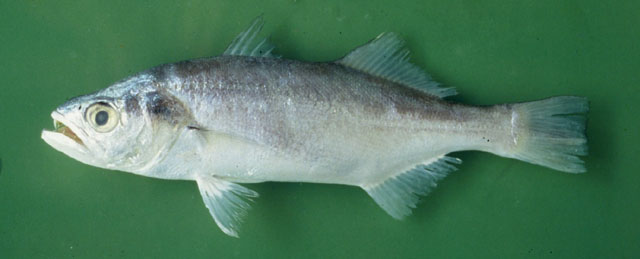| Sciaenidae (Drums or croakers) |
| 41.5 cm TL (male/unsexed); max.weight: 740.0 g |
|
demersal; brackish; marine; depth range 1 - 45 m |
| Western Atlantic: Costa Rica to southern Brazil. |
|
Dorsal spines (total): 8-9; Dorsal soft rays (total): 19-20; Anal spines: 2-2; Anal soft rays: 18-19. Silver grey, darker above. A diffuse black spot at pectoral-fin bases, fins pale to yellowish. Mouth large, strongly oblique, lower jaw projecting. Upper jaw with a pair of large canine-like teeth at tip. Chin without barbel or pores, lower margin of snout with 2 marginal pores. Two widely separated dorsal fins. Gas bladder with a pair of horn-like anterior appendages. Sagitta (large earstone) moderately thick and oval (Ref 51721). |
| Found in shallow coastal waters over sandy mud or soft mud bottoms (Ref. 3702). Feeds mainly on small shrimps (Ref. 3702). Important food fish. |
|
Least Concern (LC); Date assessed: 03 March 2020 Ref. (130435)
|
| harmless |
Source and more info: www.fishbase.org. For personal, classroom, and other internal use only. Not for publication.
